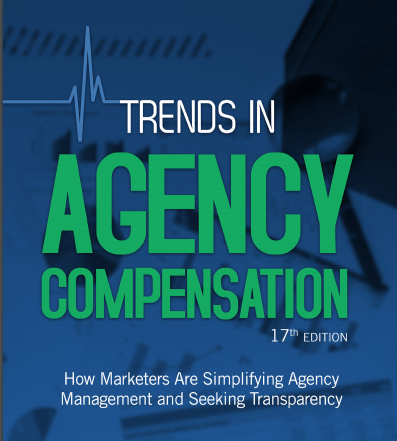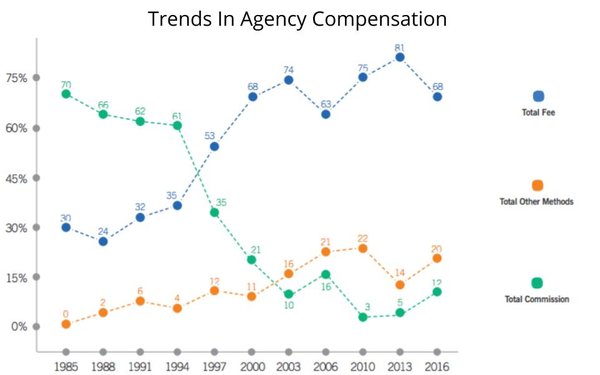
After years of erosion, Madison Avenue’s original media commission-based compensation system is making a comeback, albeit marginally, according to just-released findings from the Association
of National Advertisers latest “Trends In Agency Compensation” report.
The report, the 17th edition compiled by the ANA, shows that after bottoming out at a low of 3% of
compensation models cited by respondents in 2010, media commissions has grown to the preferred model among 12% in 2016.
While that’s down from the majority of agency commission
models cited when the ANA began tracking agency compensation models in the 1990s, it is on the upswing, while the fee-based systems that replaced it are beginning to erode -- falling from a high of
81% in 2013 to 68% in 2016.
advertisement
advertisement
A third catch-all category dubbed “total other methods” has also been rising and now represents 20% of all agency compensation formulas.
The report, which will officially be released Tuesday during the opening of the ANA’s Advertising Financial Management Conference, also found that so-called “incentive”
models “do not improve agency performance. Structuring and managing effective incentive plans is complicated, time-consuming, and often ineffective.”
The study also
showed that senior management involvement in agency compensation negotiations has more than doubled from 33% in 2013 to a high of 73% in 2016.
Other key findings include:
Negotiation: Most
advertisers (53%) still negotiate agency compensation annually; however, this practice is down 19% from the previous survey. Those who negotiate “when required” is at 40%, up substantially
from 2013 (26%).
The report is based on an online survey conducted
by the ANA in December 2016 and January 2017 among a sample of 82 member companies familiar with agency compensation practices at their companies, representing more than 1,100 client/agency
compensation agreements.
